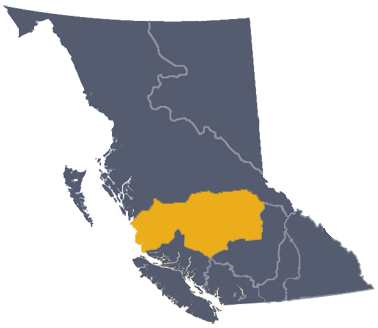Cariboo-Chilcotin Coast - Overview
Often called “cowboy country,” this region’s mainstay is cattle production, along with small-scale mixed agriculture. Horse breeding supplies both ranchers and the agri-tourism sector. Highway and rail transport provides access to larger urban markets, as well as international markets via Port Metro Vancouver.
Growing conditions
This varied terrain contains many microclimates. Coastal regions are temperate and wet, while the interior sees cold winters, hot summers and low precipitation. Soil types include high-clay, sandy and silt.
Crops, livestock and food processing
Products range from cabbage, cauliflower and root vegetables to forage and grain silage crops. Extensive Crown timber land also provides forage-rich grazing range for the large cattle industry. Other livestock includes sheep, poultry, hogs and alpacas.
Local Cariboo-Chilcotin Coast information
Find out more specific information about the Cariboo-Chilcotin Coast agricultural region:
Regional agrologist
Nicole Pressey
Telephone: 236-713-2223
Email: Nicole.Pressey@gov.bc.ca
Resources
The ministry has developed regional guides as a resource for producers, on-the ground researchers, and consultants to reflect on the climate issues challenging environmental sustainability and local farm businesses and food production.

The Cariboo-Chilcotin Coast region includes the Cariboo Regional District (Williams Lake, Quesnel, Chilcotin), Central Coast Regional District (Bella Coola, Hagensborg) North Cariboo, Quesnel, Likely, Horsefly, McLeese Lake, Williams Lake, South Cariboo, 100 Mile House, Chilcotin
Contact information
AgriService BC
Have a question? Call or email and a staff person will assist you.
Telephone: 1-888-221-7141
Email: AgriServiceBC@gov.bc.ca
